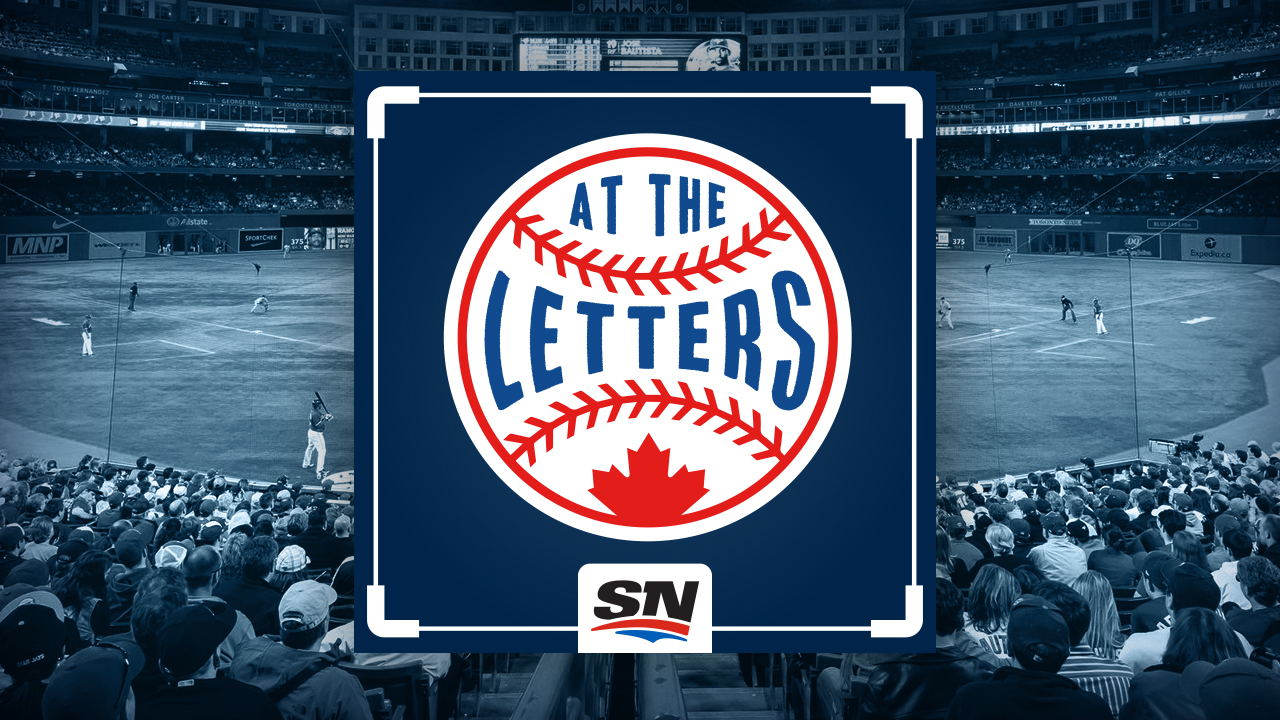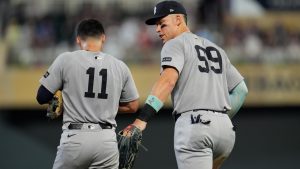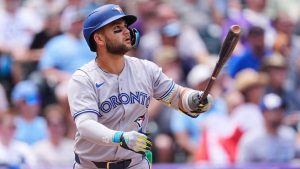Juan Soto’s quest for a new home — and a colossal contract — took a significant step forward this week when five teams reportedly made the superstar offers, including the Toronto Blue Jays.
To be clear, the Blue Jays have always been, and continue to be, a dark horse in this race. The goal of this article isn’t to convince you otherwise. However, this is an interesting moment to contemplate what a reasonable offer to the outfielder could, or should, look like.
Soto is impossible to value with complete precision because a player of his calibre brings difficult-to-quantify credibility to any franchise he joins, along with some nifty marketing possibilities. Even so, if we focus on the on-field contributions, we can get a sense of how wise it would be to hand Scott Boras the kind of massive 15-year deal his client is looking for.
Before we go down this road, it’s important to acknowledge that many people disagree with trying to value Soto as a premise for one of two reasons:
A) They just want to see their team sign Soto regardless of the price.
Or
B) From a philosophical standpoint, they don’t believe in paying $600-plus million to a single player from a risk-management standpoint.
Either viewpoint is valid, but you can bet that if the Blue Jays made an offer to Soto, they did so after an exhaustive valuation process.
What you’ll see below will be slightly less exhaustive, but it should give you a general sense of what’s happening here.
The uniqueness of Juan Soto
Before breaking this thing down, it’s critical to emphasize just how rare a free agent Soto is. It feels odd to say that a generational opportunity has arisen in free agency for a second year in a row after Shohei Ohtani was available last off-season.
It’s also 100 per cent accurate.
Since 1900, just 15 players come to the plate 4,000 or more times by the end of their age-25 season. Soto’s wRC+ (158) ranks fourth in that group behind only Ty Cobb (174), Mickey Mantle (172), and Mike Trout (169).
Mel Ott is relatively close behind him (151), but the man in sixth place (Alex Rodriguez) is way down at 140. Soto is part of a five-man cohort of the best young hitters ever, and Trout is his only modern contemporary.
Since he broke into the league, Soto has produced an OBP over .400 every season while never taking fewer than 650 plate appearances in a full campaign. His worst season by wRC+ (143 in 2019) would be the 23rd best in Blue Jays history. His best (180 in 2024) would be tied for No. 1.
His combination of youth, durability, and production — including in the post-season — makes him the type of player who is almost never available. Decades can easily pass without hitters like Soto even coming into the league.
How we value on-field production
For much of this valuation, we are going to use FanGraphs’ value metric, which converts fWAR into a dollar value based on what a player would make in free agency.
The amount of money teams pay for a projected fWAR in the market can fluctuate significantly over time. When Ben Clemens at FanGraphs made an attempt to pin it down, he found the price for a player who projected for two or more fWAR (an average starting position player/starter) varied between $5.5 million and $9.5 million between 2018 and 2022. The pandemic revenue shortfall affected those numbers, which tend to grow over time as long as the league is financially healthy.
It is extremely difficult to project the league’s prospects over a 15-year term, so we’re going to project that salaries — and by the extension, the cost of fWAR — will grow in line with inflation in the years to come. Some years it may be higher or lower, but it makes for some solid back-of-the-napkin math.
According to the US Inflation Calculator, inflation has averaged 3.08 per cent per year over the last 10, which has included multiple years below one per cent and post-pandemic spikes in 2021 and 2022. By increasing the value of a single fWAR by 3.08 per cent in each year of the contract, we’ll have an idea of what it will take for Soto to justify his contract over time.
Dividing Soto’s career into three chunks, we can get a sense of how much value he projects to bring — and what a reasonable contract looks like.
Years 1-5
This is where Soto will provide some tremendous value. It’s possible he might slip a touch defensively and on the bases, but he’s not likely to suffer serious decline in his age 26-30 seasons.
In order to project his fWAR, we took his Steamer projection for 2025, and from 2026-2029, we combined that projection against his career average per-650 plate appearances. The fWAR numbers won’t be this metronomic, but this is the idea:
You could make a case that this is a conservative estimate, and you could justify running his 2025 projection through this whole half-decade, considering Soto’s age.
But it seems fair to leave some room for the occasional nagging injury or a surprising off-year in the mix.
Years 6-10
There is no perfect way to project age-related decline, and Soto is such an outlier of a player that a general average seems unlikely to apply to him.
So for this part of the projection, we will use the decline arc of the most similar hitter we can find both stylistically and statistically: Joey Votto.
Here’s a comparison between Soto’s career stats and Votto’s through his age-30 season:
Votto is an excellent comp, and his fWAR per 650 until he was 30 (5.3) dropped to 4.4 in his age 31-35 seasons. That’s a decrease of approximately 17 per cent, and if we apply that same decline to Soto’s career average for these years — while including inflation — we get a chart like this:
The year-by-year distribution of fWAR here isn’t precise because we’ve averaged the decline for the whole five-season chunk and arranged it on a gradual slope, but it provides an idea of how inflation could help soften the blow of Soto’s early decline phase.
By his age-35 season, a fWAR could cost $10.77 million in free agency, which is 31.1 per cent higher than what FanGraphs’ value metric placed it at for 2024 ($8.2 million).
While it’s unfair to assume most players will be star-level performers through their early 30s, it would be a surprise if Soto wasn’t based on what he’s done so far. Through two-thirds of the contract, this projection has the outfielder at $532.36 million in on-field value.
Years 11-15
A lot will happen between now and Soto’s age-36 season and any predicting we do comes with a grain of salt.
Once again, our less-than-totally-scientific method will be to find a comp that makes sense and map their trajectory onto Soto.
We’re going to go with Gary Sheffield for a couple of reasons:
• Like Soto, he debuted before he was 20 and reached his age-36 season with 17 seasons under his belt.
• While he wasn’t quite as successful early, between his age-23 and age-25 campaigns, he produced a 147 wRC+, making him one of the league’s best young hitters.
• In his best years (1995-2001), Sheffield posted an OBP above .400 every season and a walk rate (17.8 per cent) within one per cent of Soto’s (18.8 per cent) — along with a slightly better OBP (.433 to .421) and wRC+ (160 to 158)
• He transitioned from the outfield to a full-time DH at this point of his career, never playing more than 20 games in the field from age-37 on — a likely path to Soto.
• Despite steroid accusations, Sheffield was not superhuman in his twilight years, producing only healthy and productive seasons between ages 36 and 40. That makes him a more realistic model than late-career beasts like Edgar Martinez or David Ortiz.
Through his age-35 season, Sheffield averaged 4.2 fWAR per 650 plate appearances. From age 36-40, that number dropped to 1.7 fWAR, a decrease of 59.5 per cent, reflecting a significant decrease in production and position value.
It’s fair to expect something similar with Soto. So we’ll apply our 59.5 per-cent decrease to his career average to get something like this:
What have we learned?
The total value we arrive at is $670.45 million.
While that number doesn’t reflect much injury risk until the last five years of the deal — where its primary comp suffered a number of injuries — Soto has also been remarkably durable thus far.
Inflation also isn’t the perfect way to estimate salary growth, but any team that feels confident that it can predict the direction of MLB’s financial picture with conviction over a 15-year span is kidding itself.
There are plenty of limitations to this exercise, but even if it is a touch aggressive on where it places Soto’s value, that’s mitigated slightly by what a superstar of his ilk brings off the field. If he signed with the Blue Jays, for instance, the resulting boom in consumer confidence would likely have a significant and tangible impact on ticket sales and TV ratings.
Soto’s contributions are also likely to be at the core of some level of post-season success for the team that signs him, leading to further revenue and perhaps increased franchise value.
Signing Soto remains a massive leap of faith. He could easily fail to provide good value to his next team with an Albert Pujols-esque early decline or have his body betray him as Mike Trout’s has regularly since he signed his 12-year deal.
No player is guaranteed to produce at an elite level next year, let alone for a decade-and-a-half. At the same time, Soto is worth considering at the groundbreaking price point he’ll demand.
When mega contracts are signed, the happiest party is often the player — or agent — but there may be a win-win for whoever is willing to go all in for Soto.




 4:29
4:29

